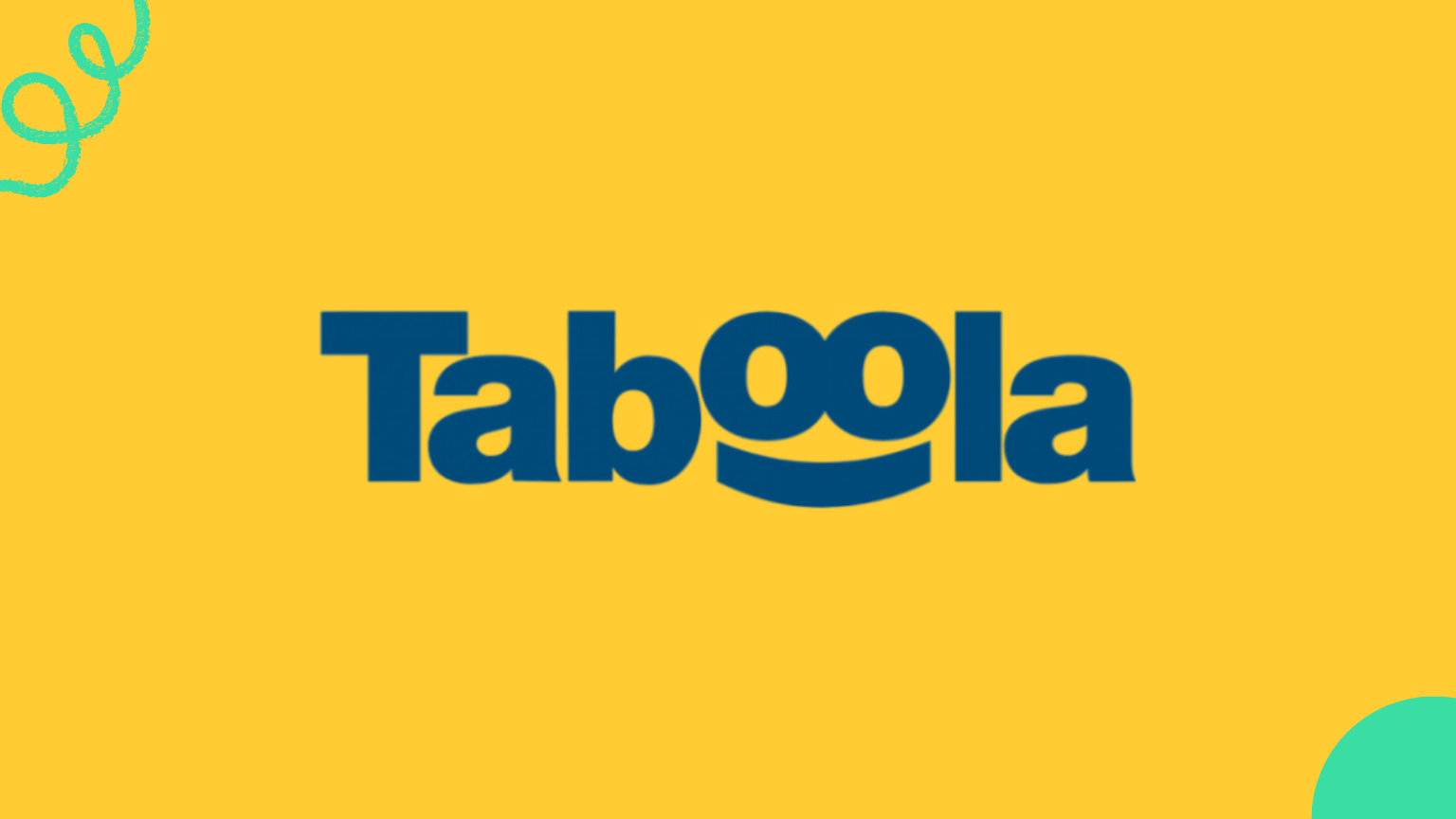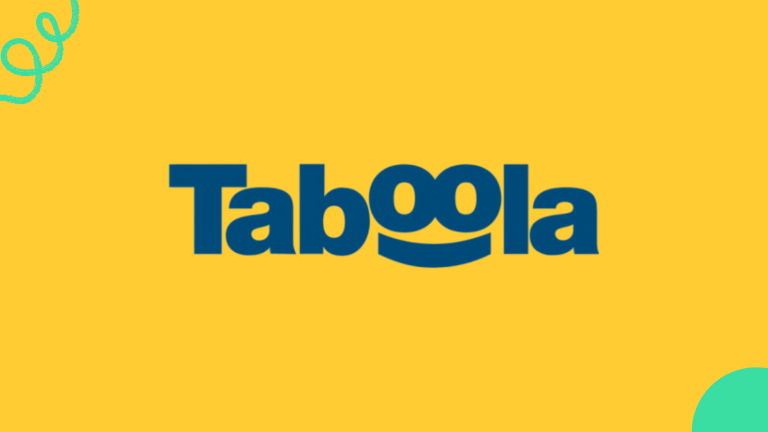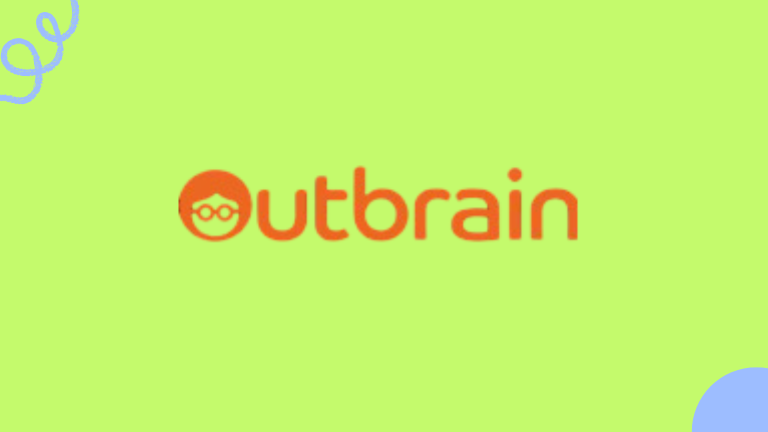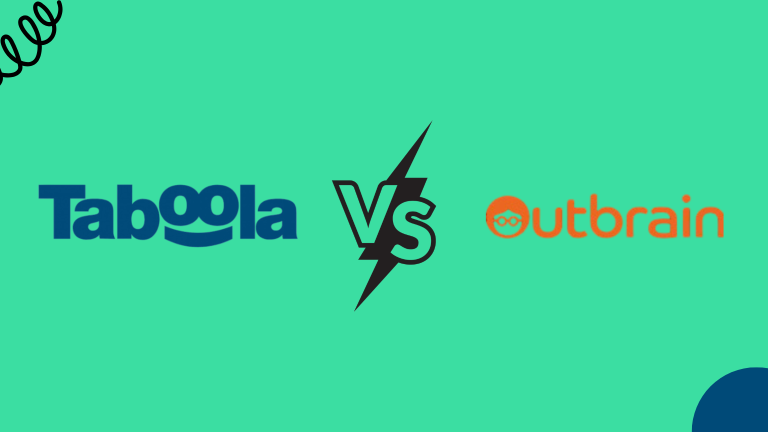Table of Contents
What is Taboola?
Taboola is one of the leading platforms for native advertising, a form of digital marketing designed to blend seamlessly with the content a user is already engaging with. You’ve likely seen Taboola’s ads while browsing news sites, appearing under headlines with phrases like “You May Also Like” or “Sponsored Content.”
Native advertising, unlike traditional banner ads, is non-intrusive and designed to match the look and feel of the platform it’s displayed on. Taboola excels at creating personalized ad experiences, making it a favorite for marketers looking to drive traffic, generate leads, and improve conversions.
What is Taboola: A Brief Overview
The Mechanism Behind Taboola Ads
Taboola connects advertisers with publishers to showcase sponsored content in a way that feels organic. These ads are typically displayed at the bottom of articles, as part of a news feed, or even in recommended reading sections.
Algorithms and Personalization
Taboola uses advanced algorithms to deliver personalized recommendations. By analyzing user behavior, location, and interests, it ensures that users see ads tailored to their preferences.
Where Taboola Ads Appear?
Taboola partners with high-traffic websites like news outlets, blogs, and entertainment sites. Popular publishers such as CNBC, NBC News, and USA Today integrate Taboola ads directly into their platforms.
Benefits of Using Taboola
- Improved Engagement Through Native Advertising: Because Taboola ads mimic the site’s editorial content, users are more likely to engage with them compared to traditional display ads. This leads to higher click-through rates (CTR) and better ROI.
- Reaching a Wider Audience: Taboola’s extensive network of publishers ensures your content reaches millions of users worldwide.
- Cost-Effectiveness Compared to Other Advertising Platforms: Taboola’s pricing model often results in lower cost-per-click (CPC) compared to platforms like Google Ads, making it a budget-friendly option for advertisers.
Taboola Pricing
| Pricing Component | Details |
|---|---|
| Cost-Per-Click (CPC) | Ranges from $0.10 to $0.50 per click, depending on targeting and competition. |
| Daily Budget | Minimum daily spend typically starts at $10-$20. |
| Geographic Targeting Costs | Ads targeting premium regions (e.g., North America, Europe) may have higher CPCs. |
| Campaign Setup Fee | No additional setup fee; payment is based on your ad performance. |
| Custom Campaigns | Costs vary for premium ad formats or partnerships with top publishers. |
| Monthly Spend Requirements | For enterprise-level accounts, minimum monthly spends may apply. |
Taboola Pricing Model
Taboola’s pricing model is designed to be flexible and accessible for advertisers of all sizes. The platform operates primarily on a Cost-Per-Click (CPC) basis, with rates ranging from $0.10 to $0.50 per click, depending on factors like audience targeting, ad competition, and geographic reach. For campaigns targeting premium regions such as North America or Europe, CPC rates may be higher due to increased demand. A minimum daily budget, typically starting at $10 to $20, ensures that even small businesses can get started without significant upfront costs. Taboola doesn’t charge a campaign setup fee; instead, costs are tied directly to ad performance, allowing advertisers to control their spend.
Key Features of Taboola
Taboola Feed
The Taboola Feed is a content discovery platform that mimics the infinite scrolling experience familiar to users of social media. Instead of ending with a single article, users are presented with a dynamic, scrollable feed of content recommendations, advertisements, and videos. This seamless integration keeps users engaged on the website for longer periods while offering advertisers multiple touchpoints to reach their audience. The feed is designed to feel natural and non-intrusive, blending ads with editorial content for a cohesive experience. Taboola Feed supports a variety of content formats, including sponsored articles, autoplay videos, and app download prompts, ensuring advertisers can reach their target audience in engaging and diverse ways.
Industries like e-commerce, entertainment, and health have reported significant success with Taboola ads due to their visual appeal and engaging formats.
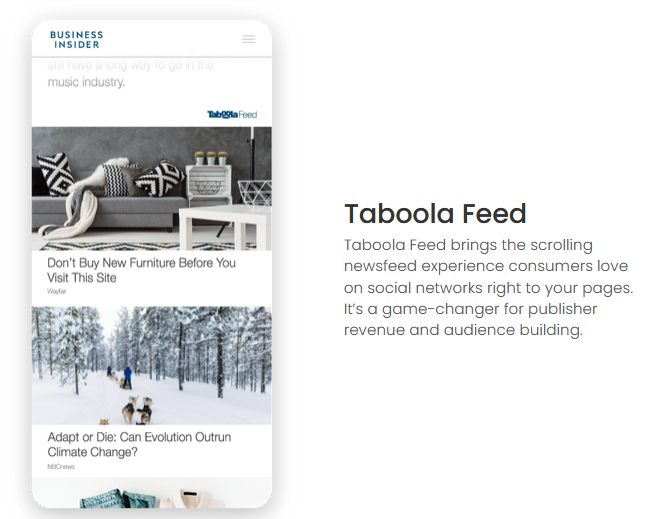
Via Taboola
Taboola’s Audience Targeting
Taboola offers powerful audience targeting options that enable advertisers to reach the right users at the right time. Its behavioral targeting analyzes user activity and preferences, delivering content tailored to individual interests. For instance, someone frequently browsing health blogs might see recommendations for fitness products or wellness tips. Contextual targeting matches ads to the content users are currently viewing, ensuring relevance and increasing engagement. Advertisers can also refine their campaigns through geo-targeting, focusing on specific regions or countries, and device targeting, creating separate campaigns for mobile, desktop, or tablet users. These granular targeting options give advertisers the flexibility to tailor their strategies, ensuring better performance and ROI.
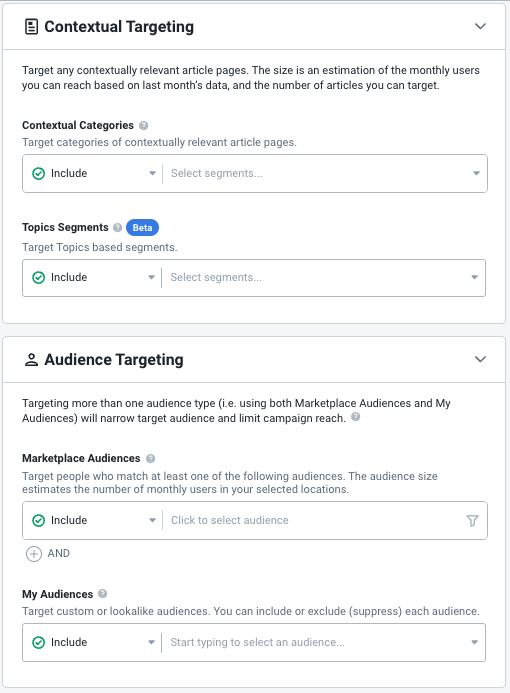
Via Taboola
Analytics and Reporting
Taboola provides comprehensive real-time analytics that allow advertisers to track and optimize their campaigns effectively. Detailed metrics, such as impressions, clicks, click-through rates (CTR), conversions, and cost-per-click (CPC), are presented in an intuitive dashboard. The platform also offers insights into user engagement, helping advertisers identify which ads are resonating most with their audience. A key feature is its ability to calculate return on ad spend (ROAS), allowing businesses to measure their campaigns’ profitability. Advanced reporting tools, such as heatmaps and breakdowns by demographic or geographic performance, help marketers pinpoint areas for improvement. With these insights, advertisers can make data-driven decisions, refine their strategies, and maximize their marketing budgets.
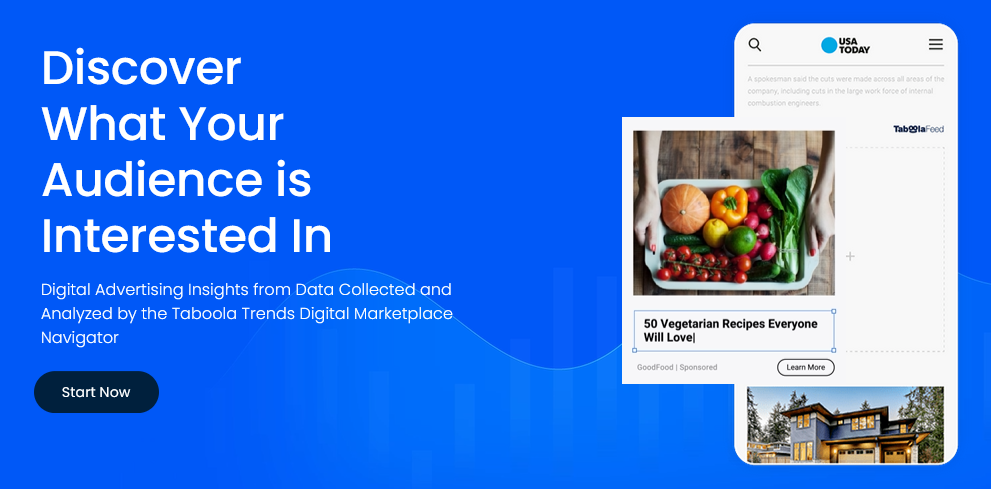
Via Taboola
Integration with Major Platforms
Taboola’s seamless integration capabilities make it easy for advertisers to manage their campaigns alongside other marketing tools. For example, advertisers can connect Taboola with Google Analytics to track how users engage with their website after clicking on a Taboola ad. Integration with tools like Facebook Pixel enables advanced retargeting strategies, allowing advertisers to re-engage users who have interacted with their brand before. Taboola also supports CRM platforms, which helps businesses align their advertising campaigns with customer relationship management efforts. This interoperability ensures that Taboola fits seamlessly into an advertiser’s broader marketing ecosystem, making it easy to track performance and maintain consistent branding across channels.
Content Creation Tools
Taboola offers a suite of content creation tools that empower advertisers to design and optimize their campaigns for maximum impact. Its AI-powered headline analyzer suggests improvements to make headlines more engaging and clickable, while the image optimization tool recommends visuals that resonate with the target audience. These tools are particularly valuable for marketers without in-house creative teams, as they simplify the process of crafting high-performing ads. Taboola’s content creation tools also provide insights into trending topics and keywords, helping advertisers align their campaigns with current consumer interests. This ensures that advertisers produce content that is not only relevant but also captivating, increasing the likelihood of user engagement and conversion.
Different Types of Taboola Ads Formats
Taboola offers several ad formats that blend seamlessly with content on publisher websites. Here are the main types:
- Native Ads: Text, image, or video-based ads that match the website’s style and appear as part of the content feed.
- Taboola Feed: A continuous, scrollable feed of content recommendations, including in-feed and horizontal formats.
- Video Ads: Outstream (auto-play when visible) and in-feed video ads that engage users through motion.
- Interstitial Ads: Full-screen ads that appear during page transitions.
- Carousel Ads: Multi-content ads where users can swipe through different media.
- Branded Content: Sponsored articles or videos that subtly promote a brand while providing value.
- Sponsored Content: Long-form articles or videos created by the advertiser that are clearly marked as sponsored.
- Taboola Newsroom: A tool for tracking and optimizing campaign performance.
Key Benefits of Taboola Ads Formats:
- Native Experience: Ads blend naturally with the surrounding content, reducing user disruption.
- Targeting: Taboola allows for detailed targeting based on interests, demographics, and behavior, helping to reach the most relevant audience.
- Flexibility: Multiple formats can be combined to suit different marketing objectives and platforms.
- Engagement: Video, interactive, and dynamic formats increase user interaction and engagement rates.
Setting up a Taboola Ads Campaign
Account Creation and Platform Overview
The first step in setting up a Taboola Ads campaign is creating an account. Visit the Taboola website and sign up by providing your account details and billing information. After account creation, you will gain access to the Taboola platform, where you can create, manage, and optimize your campaigns. The platform is designed to be user-friendly and provides various tools for targeting, tracking, and analyzing your ads. You will also need to link your website or landing page to Taboola to ensure your ads direct users to the correct destination.
Defining Campaign Objectives and Target Audience
Once your account is set up, it’s time to define the objectives of your campaign. Whether you’re aiming for brand awareness, lead generation, or conversions, it’s important to align your campaign’s goal with your overall marketing strategy. Taboola allows you to tailor your ads based on a variety of audience segments, including demographics, interests, and browsing behavior. You can target users based on age, gender, geographic location, device type, and specific interests. This precise targeting ensures that your ads reach the most relevant audience for better engagement and performance.
Budgeting and Bid Strategies
Setting an appropriate budget is key to ensuring your campaign is cost-effective. Taboola allows you to choose a daily budget, which is the maximum amount you’re willing to spend each day on your campaign. Additionally, you will need to decide on your bidding strategy, with options like Cost Per Click (CPC) or Cost Per Thousand Impressions (CPM). The CPC model focuses on paying for each click your ad receives, while CPM charges based on the number of impressions. Setting a competitive bid amount is crucial, as it determines how often your ads will be shown to your target audience.
Choosing the Right Ad Formats and Creating Compelling Ad Content and Landing Pages
Taboola offers various ad formats, including native ads, video ads, carousel ads, and more. Choose the format that aligns with your goals and is most likely to engage your target audience. For instance, native ads are highly effective for driving traffic, while video ads are great for brand storytelling. Once you’ve selected your format, focus on creating compelling ad content that includes a strong headline, an engaging description, and high-quality visuals (or videos). Ensure that your ad content aligns with your landing page, providing users with a seamless experience. The landing page should also be optimized for conversions, with clear calls to action and relevant information to drive desired actions.
Optimizing Taboola Ads Campaigns
Monitoring Performance Metrics and KPIs
Optimizing your Taboola Ads campaign begins with continuous monitoring of key performance metrics (KPIs). These metrics include impressions, clicks, click-through rate (CTR), conversion rates, cost per click (CPC), and return on investment (ROI). By tracking these KPIs, you can gauge the effectiveness of your ads in real-time and identify areas that need improvement. For instance, if your CTR is low, it may indicate that your ad creatives or targeting need adjustments. Conversion tracking, often set up with a pixel, helps you assess the impact of your campaign on your business objectives, such as purchases, sign-ups, or leads. Regular monitoring helps you make informed decisions and ensures that your budget is spent efficiently.
A/B Testing Ad Creatives and Headlines
A/B testing is a powerful method for optimizing Taboola Ads campaigns. This process involves creating multiple versions of your ads, each with slight variations in elements like headlines, images, or calls to action, and then comparing their performance. By testing different creatives, you can identify which combinations resonate most with your audience and drive higher engagement. For example, you may find that one headline generates a significantly higher click-through rate (CTR) than others, or that an image performs better than a video. A/B testing should be an ongoing process, as it allows you to refine your approach over time and continuously improve the performance of your ads.
Implementing Retargeting Strategies
Retargeting is an essential strategy for improving the performance of your Taboola Ads campaign. It involves showing ads to users who have previously interacted with your website or engaged with your content but did not convert. By retargeting these users, you stay top of mind and encourage them to return and complete the desired action, whether that’s a purchase, sign-up, or download. Taboola allows you to set up custom retargeting audiences, such as users who visited a specific page or spent a certain amount of time on your site. Retargeting ads can be more personalized and relevant, which often leads to higher conversion rates and a better ROI.
Utilizing Audience Segmentation
Audience segmentation is a key technique in optimizing Taboola Ads campaigns, as it allows you to tailor your messaging and targeting to specific user groups. By segmenting your audience based on factors like demographics, behavior, interests, and past interactions with your brand, you can create more relevant and personalized ad experiences. For instance, you might segment users who have shown interest in particular products or services and serve them ads that are tailored to their specific needs. This improves ad relevancy, increases engagement, and can lead to higher conversion rates. Taboola offers advanced targeting options, so you can dynamically adjust your campaign to address the preferences of different audience segments.
Understanding and Adjusting to the Taboola Algorithm
To effectively optimize your Taboola Ads campaigns, it’s important to understand how Taboola’s algorithm works and how it impacts ad delivery. The algorithm uses machine learning to analyze user behavior and match your ads with the most relevant audiences. The system evaluates factors such as user interests, engagement patterns, and even the time spent on certain content. By continuously analyzing performance data and refining your targeting, creatives, and bidding strategies, you can ensure that your ads are being shown to the right users at the right time. Over time, as the algorithm learns more about your audience and campaign performance, it can help improve ad relevance and drive more efficient results.
Conclusion
Taboola has emerged as a powerful and innovative platform in the world of digital advertising, bridging the gap between advertisers and their target audiences through its seamless native advertising solutions. Unlike traditional ad formats that can feel intrusive or disrupt the user experience, Taboola excels by embedding ads directly within the content ecosystem, making them a natural part of the browsing journey.
In summary, Taboola isn’t just a native advertising platform; it’s a comprehensive marketing ecosystem that helps brands tell their stories in a way that feels authentic, engaging, and impactful. With its cutting-edge technology, expansive publisher network, and commitment to delivering meaningful user experiences, Taboola continues to redefine how businesses connect with consumers in the digital age.
FAQs
u003cstrongu003eWhat is Taboola, and how does it work?u003c/strongu003e
u003cstrongu003eTaboolau003c/strongu003e is a native advertising platform that connects advertisers with publishers to display personalized, non-intrusive ads to users. Unlike traditional banner ads, Taboola’s ads blend seamlessly with the content on a website, making them feel like part of the browsing experience. These ads often appear under headings like u0022You May Also Likeu0022 or u0022Recommended for Youu0022 on high-traffic websites. Taboola uses advanced algorithms and user behavior analysis to deliver content tailored to individual interests. Advertisers can promote articles, videos, or products to drive traffic, generate leads, and improve conversions. The platform partners with leading publishers like u003cstrongu003eCNBC, NBC News, and USA Today u003c/strongu003eto ensure that ads reach a wide audience.
u003cstrongu003eWhat is the cost of using Taboola for advertising?u003c/strongu003e
u003cstrongu003eTaboolau003c/strongu003e operates on au003cstrongu003e Cost-Per-Click (CPC)u003c/strongu003e pricing model, which means advertisers only pay when a user clicks on their ad. The typical CPC ranges from u003cstrongu003e$0.10 to $0.50u003c/strongu003e, depending on factors such as the target audience, geographic region, and competition within the industry. In addition to CPC, advertisers need to set a daily budget, which usually starts at u003cstrongu003e$10 to $20,u003c/strongu003e making it an affordable option for small businesses and startups. For larger advertisers, enterprise accounts may require a minimum monthly spend, particularly for premium campaigns involving partnerships with top-tier publishers. Overall, Taboola provides flexibility in budget planning while ensuring measurable results for advertisers.
u003cstrongu003eCan small businesses benefit from Taboola ads?u003c/strongu003e
Absolutely! u003cstrongu003eTaboola u003c/strongu003eis an excellent choice for small businesses aiming to increase brand awareness and drive traffic to their websites. Its cost-effective pricing model and flexible daily budgets make it accessible even for those with limited marketing resources. Small businesses can leverage Taboola’s robust targeting features to reach specific demographics, geographic locations, or users with particular interests. For example, a local bakery could target food enthusiasts in its region by promoting a blog about its best-selling recipes or a video showcasing its unique treats. The platform’s user-friendly interface and real-time analytics also make it easy for small businesses to monitor and optimize their campaigns for better results.
u003cstrongu003eHow does Taboola compare to Outbrain?u003c/strongu003e
Taboola and Outbrain are two of the most prominent players in the native advertising space, but they have subtle differences. Both platforms offer similar features, such as personalized content recommendations, robust targeting options, and partnerships with leading publishers. However, Taboola is often seen as more focused on u003cstrongu003eengagement-driven advertisingu003c/strongu003e, with features like the Taboola Feed that encourage users to scroll through an endless stream of content. Outbrain, on the other hand, is known for its u003cstrongu003econtent discovery capabilitiesu003c/strongu003e, which are particularly effective for promoting blog posts, articles, and long-form content. Choosing between the two depends on your advertising goals: if you prioritize driving clicks and engagement, Taboola may be the better option, while Outbrain might be more suitable for content-driven campaigns.
u003cstrongu003eWhat are some common mistakes to avoid when using Taboola?u003c/strongu003e
While Taboola is a powerful platform, there are a few pitfalls advertisers should be mindful of to ensure success:u003cbru003eu003cstrongu003eMisleading Headlines:u003c/strongu003e Using clickbait headlines may drive initial clicks but can harm your brand’s reputation and lead to low-quality engagement.u003cbru003eu003cstrongu003ePoor Visuals:u003c/strongu003e Low-quality images or irrelevant thumbnails can deter users from clicking on your ads.u003cbru003eu003cstrongu003eNeglecting Targeting Options:u003c/strongu003e Failing to leverage Taboola’s advanced targeting features can result in ads being shown to the wrong audience, reducing effectiveness.u003cbru003eu003cstrongu003eIgnoring Analytics:u003c/strongu003e Regularly monitoring campaign performance is crucial. Ignoring key metrics like CTR or conversion rates can prevent you from optimizing your ads for better results.u003cbru003eu003cstrongu003eSkipping A/B Testing:u003c/strongu003e Not testing different versions of your ads (headlines, images, or descriptions) can limit your ability to identify the most effective creative strategies.
u003cstrongu003eWhat types of content can I promote on Taboola?u003c/strongu003e
Taboola supports a wide range of content types, including:u003cbru003eu003cstrongu003eBlog Posts or Articles:u003c/strongu003e Drive traffic to your website by promoting educational or entertaining articles.u003cbru003eu003cstrongu003eProduct Pages:u003c/strongu003e Highlight specific products to boost sales or generate leads.u003cbru003eu003cstrongu003eVideos:u003c/strongu003e Use native video ads to capture attention and engage users visually.u003cbru003eu003cstrongu003eApps:u003c/strongu003e Drive app downloads by targeting users likely to benefit from your application.u003cbru003eu003cstrongu003eLanding Pages:u003c/strongu003e Promote lead generation forms or special offers for your audience.u003cbru003eTaboola’s flexible platform allows advertisers to tailor their campaigns to suit their business objectives, whether that’s increasing website traffic, generating leads, or driving direct sales.
u003cstrongu003eHow does Taboola ensure ad relevance?u003c/strongu003e
Taboola uses advanced machine learning algorithms and vast datasets to deliver highly personalized content recommendations. It analyzes user behavior, preferences, and context to ensure that ads are relevant to the individual. For example, if a user frequently reads technology blogs, they’re more likely to see ads for gadgets or tech services. Additionally, advertisers can set specific targeting parameters—such as geographic location, interests, or device type—to further refine ad delivery. Taboola’s commitment to ad relevance enhances user experience and improves campaign performance for advertisers.
u003cstrongu003eCan I track my campaign performance on Taboola?u003c/strongu003e
Yes, Taboola provides a robust u003cstrongu003eanalytics and reporting dashboardu003c/strongu003e that allows advertisers to track their campaign performance in real-time. You can monitor key metrics such as:u003cbru003eu003cstrongu003eImpressions:u003c/strongu003e The number of times your ad was shown.u003cbru003eu003cstrongu003eClicks and Click-Through Rates (CTR):u003c/strongu003e Insights into how many users interacted with your ad.u003cbru003eu003cstrongu003eConversions:u003c/strongu003e How many users completed a desired action, such as making a purchase or signing up for a newsletter.u003cbru003eu003cstrongu003eCost-Per-Click (CPC):u003c/strongu003e The average cost of each click on your ad.u003cbru003eThese insights help advertisers identify successful strategies and areas for improvement, enabling data-driven optimization of their campaigns.
u003cstrongu003eDoes Taboola work for e-commerce businesses?u003c/strongu003e
Yes, Taboola is a great tool for e-commerce businesses looking to reach new customers, promote products, and drive sales. The platform’s advanced targeting capabilities allow e-commerce brands to reach specific customer segments, such as users interested in fashion, electronics, or home goods. By promoting product pages or seasonal offers, e-commerce businesses can boost website traffic and increase conversions. Taboola’s native video ads are also effective for showcasing product features and benefits in a visually engaging format.
u003cstrongu003eWhat is the difference between native advertising and traditional advertising?u003c/strongu003e
u003cstrongu003eNative advertisingu003c/strongu003e, like Taboola, blends ads seamlessly with the surrounding content, making them appear less intrusive. These ads match the look and feel of the platform they appear on, such as a news website or blog. In contrast, u003cstrongu003etraditional advertisingu003c/strongu003e—like banners or pop-ups—often stands out as separate and can disrupt the user experience. Native advertising is particularly effective for engaging users in a more natural way, as it feels like an extension of the content they’re already consuming. This approach leads to higher engagement rates and better brand perception compared to traditional ad formats.

